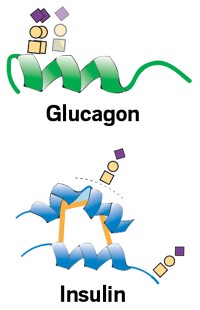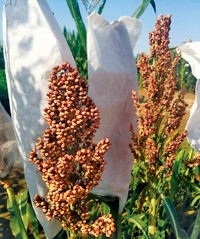Advertisement
Grab your lab coat. Let's get started
Welcome!
Welcome!
Create an account below to get 6 C&EN articles per month, receive newsletters and more - all free.
It seems this is your first time logging in online. Please enter the following information to continue.
As an ACS member you automatically get access to this site. All we need is few more details to create your reading experience.
Not you? Sign in with a different account.
Not you? Sign in with a different account.
ERROR 1
ERROR 1
ERROR 2
ERROR 2
ERROR 2
ERROR 2
ERROR 2
Password and Confirm password must match.
If you have an ACS member number, please enter it here so we can link this account to your membership. (optional)
ERROR 2
ACS values your privacy. By submitting your information, you are gaining access to C&EN and subscribing to our weekly newsletter. We use the information you provide to make your reading experience better, and we will never sell your data to third party members.
Environment
How Crops Battle Nuclear Fallout
Environmental Contaminants: Scientists investigate how flax plants' proteomes change when grown near Chernobyl
by Naomi Lubick
August 23, 2010

The Chernobyl nuclear power plant failed catastrophically in 1986 and spewed plumes of radioactive fallout onto surrounding fields. Still, plants growing around the now-dead nuclear reactor, which sits in Prypiat, Ukraine, seem to have flourished. Now, in a study of how flora respond to the region’s high levels of radiation, researchers have shown that crops react differently, each shifting various cellular pathways (Environ. Sci. Technol., DOI: 10.1021/ es100895s).
In the current study, researchers examine flax plants planted near Chernobyl to follow up on previous field experiments that they performed with soybean plants (J. Proteome Res., DOI: 10.1021/pr900034u). In both studies, Martin Hajduch of the Institute of Plant Genetics and Biotechnology at the Slovak Academy of Sciences and his colleagues planted the crops in a swath of land that received a relatively high dose of the Chernobyl fallout, and then compared them to plants grown in a control field 100 km away.
The soybean plant experiments yielded beans from the contaminated field that were visibly smaller than those from the control field. But, in the recent study, the flax seeds from both fields looked the same, and the plants accumulated less radioactivity from the soil than the soy plants did.
The researchers also measured protein expression levels in the flax seeds by a proteomic analysis that included two-dimensional gel electrophoresis, liquid chromatography, and tandem mass spectrometry. They found significant changes in the levels of 35 proteins between seeds from the two crop groups.
These affected proteins included eight involved in protein synthesis, two glycolytic enzymes from the plant’s metabolic pathways, and a signaling protein that could regulate as many as 121 other proteins through phosphorylation. In comparison, the previous study’s analysis of soybean plants mainly showed changes in storage proteins that regulate seed growth, Hajduch says. In both plants, the two glycolytic enzymes and their pathways might have some protective action against radiation.
The two studies show a "clear variation among species in their response to radioactive contaminants," says biologist Tim Mousseau of the University of South Carolina, Columbia, who has studied birds and other creatures affected by the Chernobyl disaster. The small-scale experiments are "a good starting point to determine how different plants might evolve," or adapt, he says, but larger-scale experiments on different soils could tease out radiation effects from other environmental contaminants, such as metals.




Join the conversation
Contact the reporter
Submit a Letter to the Editor for publication
Engage with us on Twitter